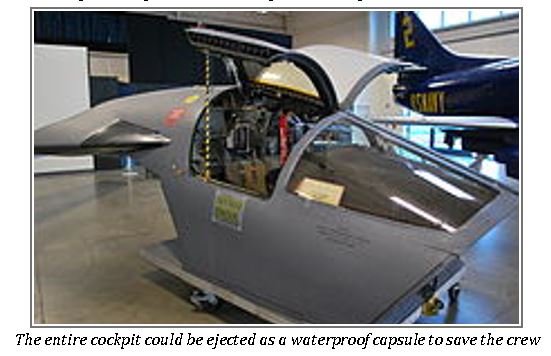 Associate member Dave Palmer continued his story about the F-111*.
Associate member Dave Palmer continued his story about the F-111*. The F-111 was an American supersonic, medium-range interdictor and tactical attack aircraft that also filled the roles of strategic nuclear bomber, aerial reconnaissance, and electronic-warfare aircraft in its various versions. Developed in the 1960s by General Dynamics, it first entered service in 1967 with the United States Air Force. The Royal Australian Air Force (RAAF) also ordered the plane and began operating F-111Cs in 1973.
The F-111 pioneered several technologies for production aircraft, including variable-sweep wings, afterburning turbofan engines, and automated terrain-following radar for low-level, high-speed flight. Its design influenced later variable-sweep wing aircraft, and some of its advanced features have since become commonplace. The F-111 suffered a variety of problems during initial development. Several of its intended roles, such as an aircraft carrier-based naval interceptor with the F-111B, failed to materialize.
The USAF F-111 variants were retired in the 1990s, with the F-111Fs in 1996 and EF-111s in 1998. The RAAF was the last operator of the F-111, with its aircraft serving until December 2010.
The F-111 was an all-weather attack aircraft, capable of low-level penetration of enemy defences to deliver ordnance on the target. The F-111 featured variable-geometry wings, an internal weapons bay and a cockpit with side-by-side seating. The cockpit was part of an escape crew capsule.

The wing sweep varied between 16 degrees and 72.5 degrees (full forward to full sweep). The airframe was made up mostly of aluminium alloys with steel, titanium and other materials used in places.
Most F-111 variants included a terrain-following radar system connected to the autopilot. The aircraft was powered by two Pratt & Whitney TF30 afterburning turbofan engines. The F-111's variable-geometry wings, escape capsule, terrain following radar and afterburning turbofans were new technologies for production aircraft.
The Australian government ordered 24 F-111C aircraft to replace the RAAF's English Electric Canberras in the bombing and tactical strike role. While the first aircraft was officially handed over in September 1968, structural issues delayed the entry into service. The RAAF's first six F-111Cs arrived at Amberley on 1 July 1973.
The purchase proved to be highly successful for the RAAF. Although it never saw combat, the F-111C was the fastest, longest range combat aircraft in Southeast Asia. Aviation historian Alan Stephens has written that they were "the preeminent weapons system in the Asia-Pacific region" throughout their service and provided Australia with "a genuine, independent strike capability". Benny Murdani, Indonesian defence minister in the 1980s, told his Australian counterpart Kim Beazley that when others became upset with Australia during Indonesian cabinet meetings, Murdani told them "Do you realise the Australians have a bomber that can put a bomb through that window on to the table here in front of us?"
Australian F-111s were bombed-up at RAAF Base Tindal ready to attack Indonesian forces and command systems during the tension in 1999 during the establishment of East Timor's independence and the deployment of the Australian-led International Force for East Timor.
In 2006, an RAAF F-111 was chosen to scuttle the North Korean ship Pong Su that had been seized in 2003 in one of the largest drug hauls in Australia. The Pong Su was sunk on 23 March 2006 by two laser-guided bombs.
The drawdown of the RAAF's F-111 fleet began with the retirement of the F-111G models in late 2007. One of the reasons given for the F-111s' retirement was the high maintenance time required for every flight hour. The last F-111s were retired on 3 December 2010.
*The following information was sourced from Wikipedia using key words and phrases from David’s presentation.